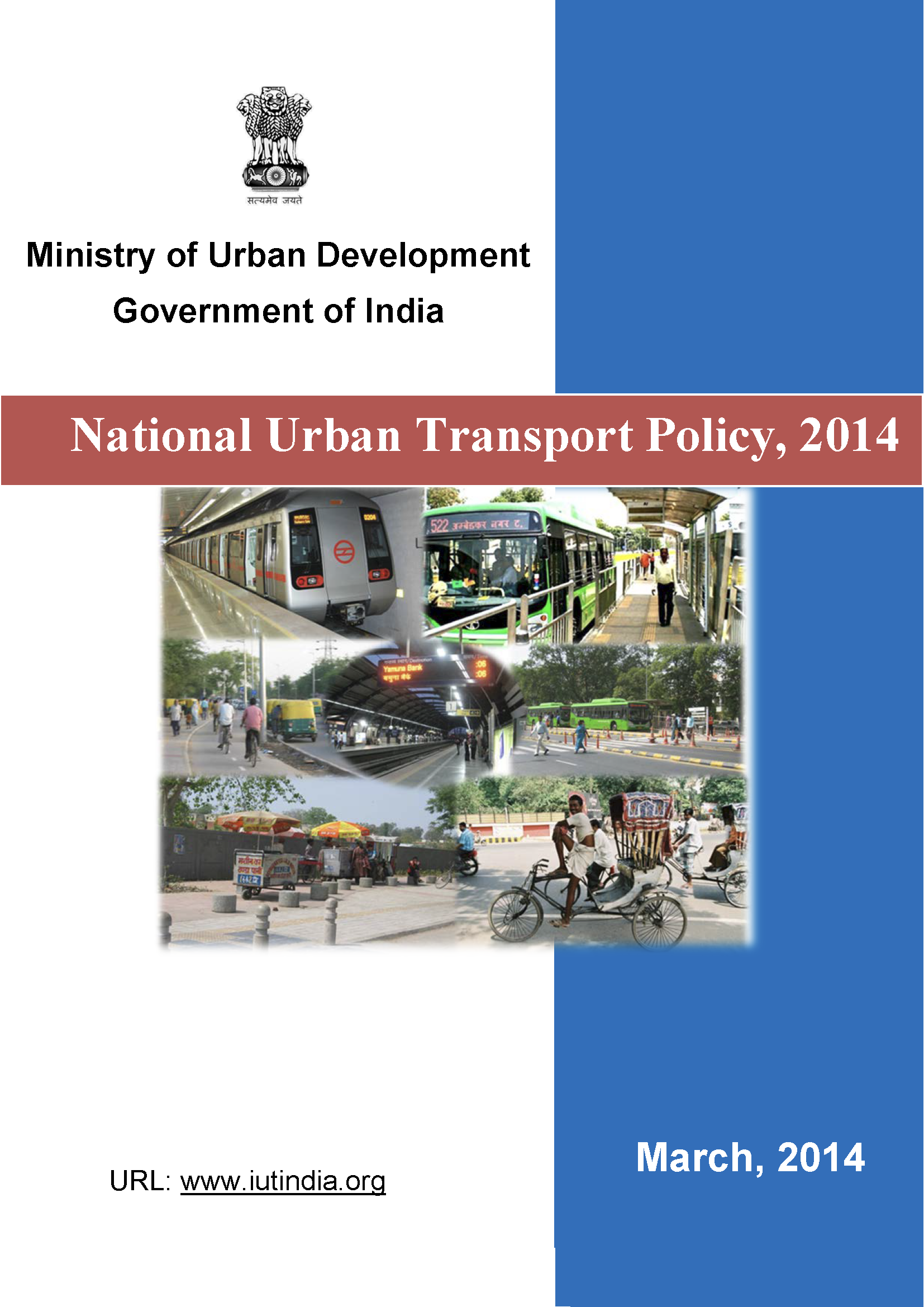
Urban Mobility Policies have been developed by regional agencies, national governments as well as provincial governments. These policies provide the goals, objectives and framework for urban mobility planning as well as the incentives, in some cases, for cities to engage in these approaches.
- The European Union has developed policies, guidelines and funding arrangements for the development of Sustainable Urban Mobility Plans that have encouraged hundreds of cities within the EU to rethink their approaches to transport planning. The EU recognizes that urban mobility is primarily a local responsibility, and it encourages local authorities to develop strategies for sustainable urban mobility.
- Most cities rely to some extent on national governments for financial resources. While cities themselves are usually in the best position to manage urban mobility, allocating resources in an equitable manner, and in way that benefits the nation as a whole, requires a policy framework with clear aims and objectives. In Brazil, France, India and Spain the development of Urban Mobility Plans is a requirement for receiving national government funds for urban mobility improvement projects. Within the framework of its urban transport pillar, the Africa Transport Policy Program (SSATP) launched an activity in nine countries (Benin, Burkina Faso, Ethiopia, Ghana, Kenya, Mali, Nigeria, Rwanda and Togo) to support the development of national policies to improve accessibility and mobility in the urban areas of Africa.
- In Belgium, which is a Federal State comprising three Provinces, the development of Urban Mobility Plans is a requirement for receiving Provincial government funds. In Canada, the Province of Québec has developed a Sustainable Mobility Policy with clear and well-defined targets to be achieved by 2030 and the Canandian Government has initiated a national review of urban mobility challenges and sets of policies to resolve them based on examples from Canadian cities.
The details of these various urban mobility policies and links to the actual documents are presented below.
Regional Urban Mobility Policies
n
Regional Policies
Europe | 2007-2021 | English
EU Urban Mobility Action Plans, Packages and Frameworks
With the
Green Paper “Towards a new culture for urban mobility”
published by the European Commission in 2007, a new agenda for urban mobility was set at the European level. In 2009, the Commission adopted a €7.9 billion
Action Plan to provide funding for practical actions addressing specific issues related to urban mobility in an integrated way. This was followed in 2013 by the €13.7 billion
Urban Mobility Package, setting out proposals for relevant action including a
Concept for Sustainable Urban Mobility Plans (SUMPs). Following an evaluation of the Urban Mobility Package which highlighted several issues in 2021, the EU published its
New Urban Mobility Framework which requires the EU to take more decisive actions for moving people and goods more sustainably. It also requires that urban nodes on the Trans European Network will adopt Sustainable Urban Mobility Plans,
n
National Policies
Brazil | 2007-2012 | Portuguese
Política Nacional de Mobilidade Urbana
The Brazilian National Urban Mobility Policy (Política Nacional de Mobilidade Urbana) was established by the Federal Ministry of Cities in 2007. It was updated in 2012 and signed into law with the stated goal to promote urban mobility with a safe, socially inclusive and equitable use of public space, contributing to the construction of sustainable cities. The Urban Mobility Law was explicit in favoring non-motorized transport at the expense of motorized transport, and public transport at the expense of individual motorized modes. The law states that municipalities with more than 20,000 inhabitants are required to prepare comprehensive Urban Mobility Plans. The Ministry of Cities allocates resources to cities with such plans through the Federal Savings Bank. The Ministry is responsible for the appraisal and selection of proposals and the Bank is responsible for disbursements of funds, supervision of implementation, and monitoring and evaluation.
Canada | 2021 | English
Urban Mobility Task Force Final Report
The Council of Ministers Responsible for Transportation and Highway Safety (COMT) recognizes the vital role that urban mobility plays in the everyday lives of Canadians. As such, in January 2019, COMT launched the Urban Mobility Task Force to examine current mobility issues affecting the Canadian urban landscape. The Task Force’s objectives are to carry out a review of selected urban mobility issues and consider policy areas to improve urban mobility. The first phase of the Task Force’s work explored the current state, challenges and opportunities of urban mobility. Phase two of this work produced a collection of examples that will help raise awareness of the various innovative ideas being implemented and considered across Canada. In addition to policy considerations, the examples include possible key performance indicators, examples of implementation across urban centres and a look at potential COVID-19-related impacts.
France | 1982-2019 | French
"Loi d’Orientation sur les Transports Intérieurs" (1982), the Domestic Transport Law, encouraged cities to prepare "Plans de Déplacements Urbains" or PDUs (Urban Mobility Plans), with the objective of promoting the rational use of the car and the integration of pedestrians, cyclists and public transport.
"Loi sur l’air et l’utilisation rationnelle de l’énergie" (1996) the Air Quality Act, made it compulsory for urban areas of more than 100,000 inhabitants to produce a PDU which is a condition for the eligibility for funding public transport operations through the "Versement Transport", a payroll tax levied on companies with more than 11 employees.
"Loi Mobilités" (2019) The Mobility Law gives the regions the role of "leaders in mobility" and empowers them to coordinate the development of mobility policies and plans through the establishment of a mobility contract with local authorities and public transport operators.
India | 2006-2014 | English
National Urban Transport Policy
The objectives of the Indian National Urban Transport Policy (first published in 2006 and updated in 2014) are to ensure safe, affordable, quick, comfortable, reliable and sustainable access to jobs, education and recreation, especially for the marginal segments of the urban population. Although this policy is entitled a "Transport" policy it does in fact address urban mobility issues and adopts urban mobility planning approaches. It stresses the importance of public consultation and the need to learn by doing through pilot projects. It provides financing for cities to prepare Comprehensive Mobility Plans and it enables cities with over one million inhabitants to establish Unified Metropolitan Transport Authorities (UMTA). It enables cities to access financial support for urban mobility infrastructure (especially mass transit systems) through the National Urban Renewal Mission (NURM) and it stresses the need for integrated urban mobility and spatial planning.
Mexico | 2020 | Spanish
Movilidad 4s para México: Plan de Movilidad para una nueva normalidad
The Mexican Mobility Plan for a New Normality is based on four "S"s: Saludable, Segura, Sustentable y Solidaria (Healthy, Safety, Sustainability and Solidarity). This document has been produced during the "COVID-19 Health Emergency" to propose a comprehensive response to mobility needs of people and goods. The Policy proposals seek to help local authorities develop comprehensive solutions that achieve the well-being of all citizens. They are grouped into four guiding principles, seven goals and 12 strategies. The aim is to develop mobility systems that are safe, inclusive and resilient and will allow everyone to access employment, education, health, culture, basic services and recreation and fully exercise their rights, without exclusion.
Spain | 2009 | Spanish
Estrategia Española de Movilidad Sostenible
The Spanish Sustainable Mobility Strategy (Estrategia Española de Movilidad Sostenible) was published in 2009 jointly by the Ministry of Development and the Ministry of Environment. It is designed to discourage private vehicle use in favor of more sustainable modes. Due to economic and environmental criteria, the need to take advantage of existing infrastructure and implement a new management with sustainability criteria is required. Measures such as the conversion of conventional lanes to bus lanes and/or bike lanes, the promotion of railway lines for the transport of goods, acquire great relevance, among others. It is a priority to manage demand, guaranteeing accessibility for people and applying the principle of proximity, especially in urban environments.

UK | 2019 | English
Future of Mobility: Urban Strategy
This strategy is an important step towards shaping the direction of mobility innovation in the UK for the public good. If successfully channelled, this could bring enormous benefits. It could make transport safer, easier, and more inclusive, while minimising its impacts on the environment. It could boost productivity and investment, increase export opportunities for UK companies and create high-quality jobs. Cleaner transport, automation, new business models and new modes of travel promise to transform how people, goods and services move. However, if technological changes are not effectively managed, they could have undesired effects, such as increasing congestion or reducing sustainable travel. This is why the Future of Mobility Urban Strategy is a central part of the Government’s Industrial Strategy.
n
Provincial Policies
Belgium | 2009-2019 | French
Stratégie Régionale de Mobilité for the Wallon Region
Belgium is a federal state and responsibilities for urban mobility are distributed between the Federal Government (national level), the Flemish Region, the Walloon Region and Brussels-Capital Region. Each region has separate urban mobility legislation, guidelines and financing conditions. Municipalities need an Urban Mobility Plan for funding local mobility improvements. In Flanders (the Flemish Region) urban mobility policy is set by the ‘Decreet betreffende het mobiliteitsbeleid’, (Decree on local mobility policy). The Flemish region is responsible for the coordination of mobility policy and regional mobility plans (R-SUMPs). The Brussels-Capital Region regional mobility plan focuses on safety, quality of life, improving public transport, reducing private car ownership and car use. In the Walloon Region, urban mobility policy is set by the SPW Mobilité (Walloon Mobility Department).
Québec, Canada | 2018 | English
Transporting Québec Towards Modernity: Sustainable Mobility Policy
This Urban Mobility Policy was published in 2018 by the Government of Québec. It proposes ten targets organized on the basis of three key spheres of sustainable development - social, environmental and economic. It proposes to influence demand by changing user behaviour through better land use planning and more numerous sustainable transportation choices. It involves three stages that should be prioritized as follows:
- REDUCE motorized trips by better integration of land use planning and transportation;
- TRANSFER trips to less energy-consuming modes; and
- IMPROVE the efficiency of vehicles by reducing their carbon footprint.










